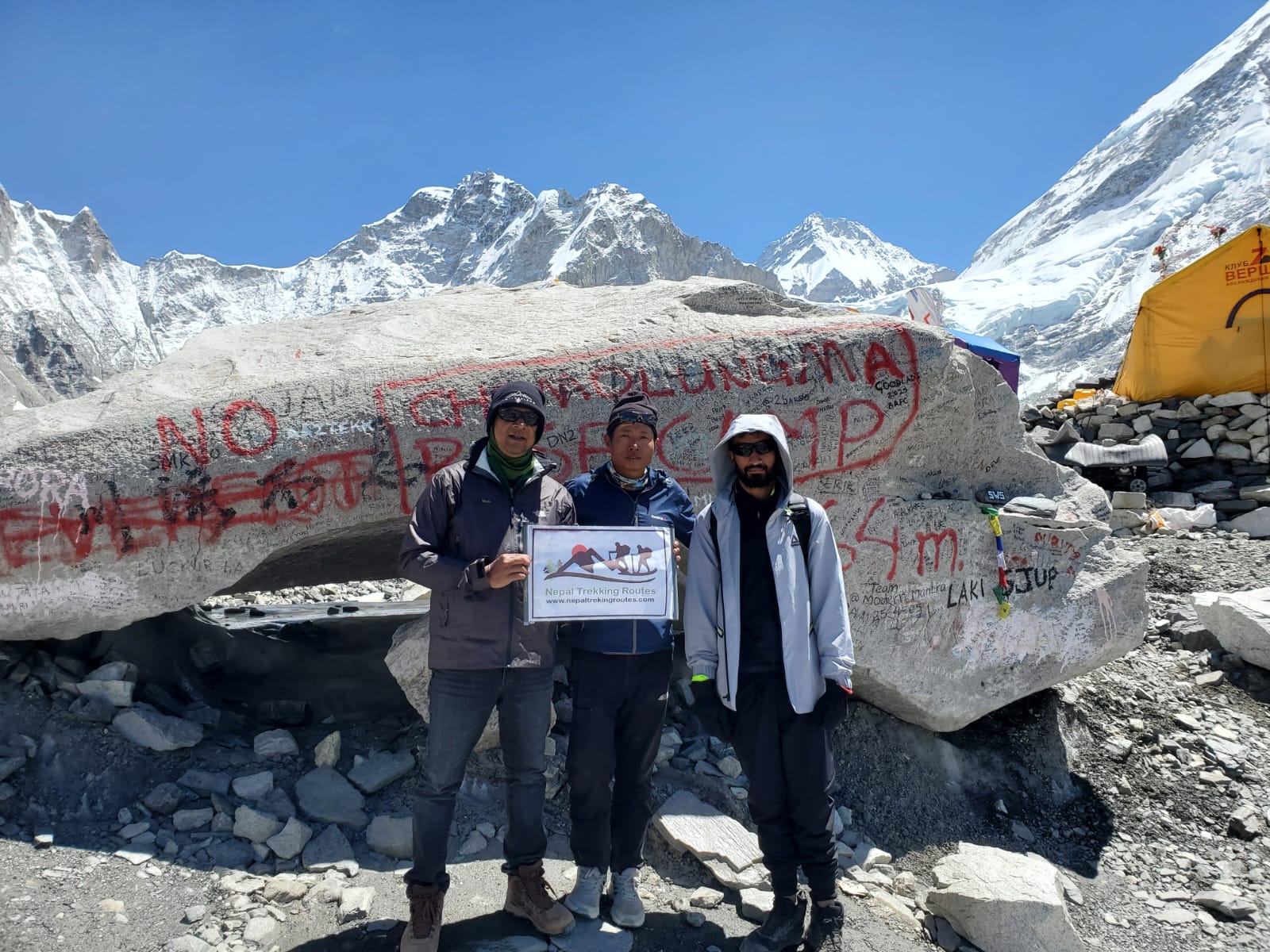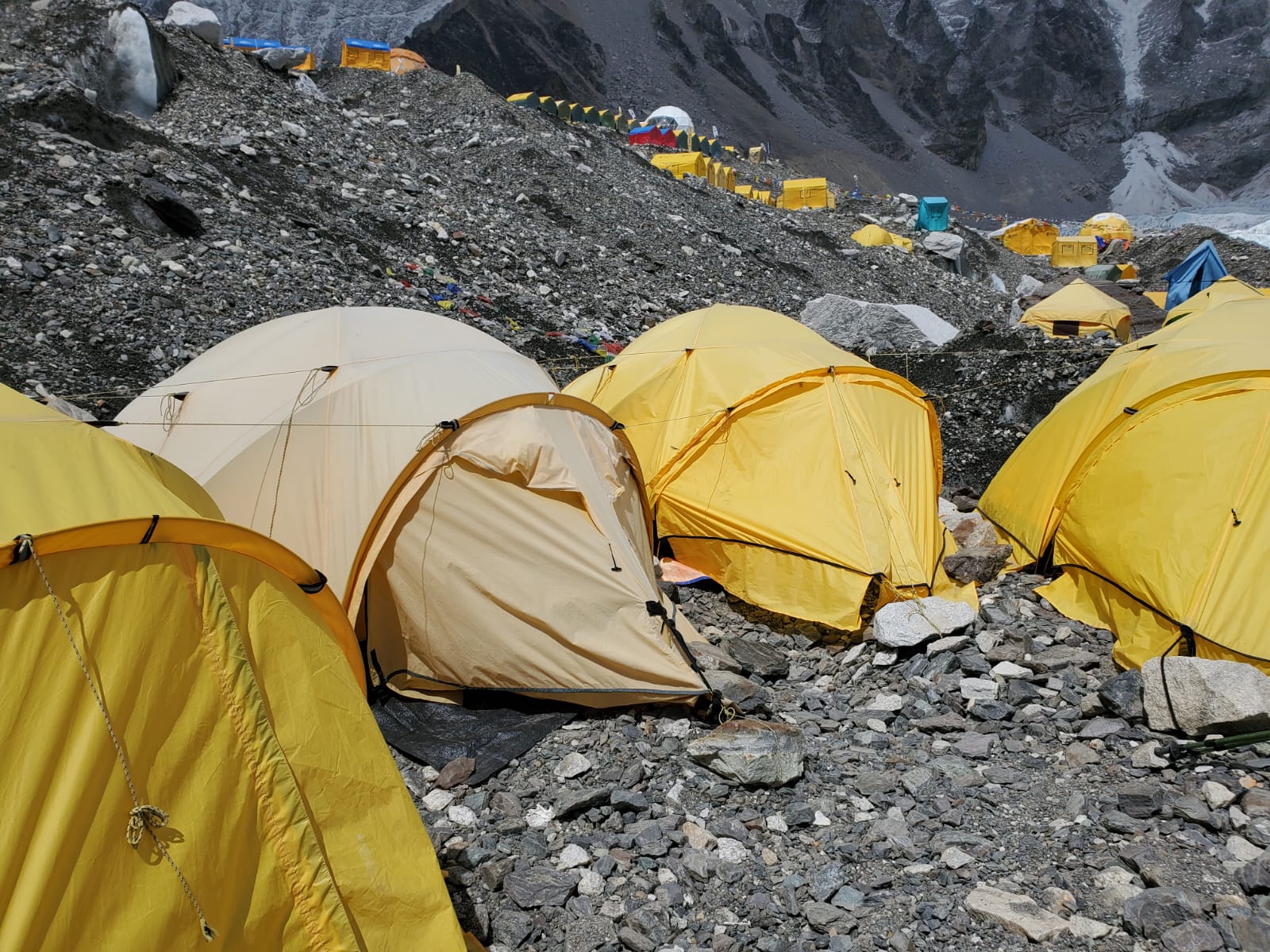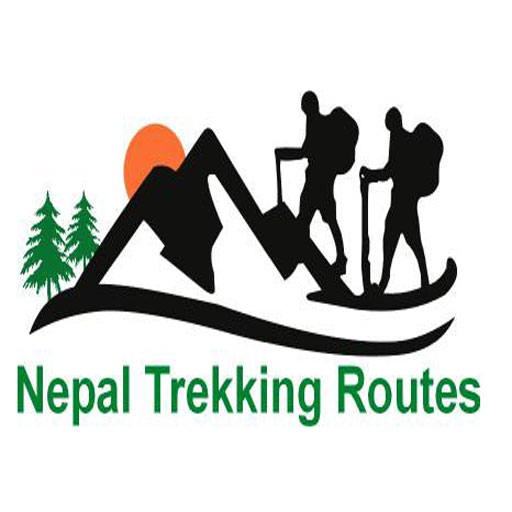Explore World Tallest Mountain
Khumbupasanglahmu, Nepal
2025-11-13 - 2025-11-28
The Everest Base Camp Trek is one of the world’s most iconic trekking adventures, drawing thousands of trekkers every year to the foot of the tallest mountain on Earth — Mount Everest (8,848.86 meters). This exhilarating journey is not only about reaching Everest Base Camp, but about immersing yourself in the breathtaking landscapes, vibrant Sherpa culture, and spiritual essence of the Khumbu region. Whether you're a seasoned trekker or a passionate traveler seeking adventure, this trek is a life-changing experience that connects you deeply with nature, culture, and your inner self.
Highlights of the Everest Base Camp Trek
- Scenic flight to Lukla – Begin your adventure with a thrilling mountain flight offering panoramic views of the Himalayas.
- Namche Bazaar – Explore the bustling Sherpa capital and acclimatize while soaking in views of Everest and Ama Dablam.
- Tengboche Monastery – Visit one of the most important Buddhist monasteries in the region, with a dramatic mountain backdrop.
- Kala Patthar Viewpoint (5,545m) – Witness a spectacular sunrise over Mount Everest and the Khumbu glacier from the best viewpoint on the trail.
- Everest Base Camp (5,364m) – Stand at the base of the world’s highest mountain, surrounded by majestic icefalls and snow-capped peaks.
The Journey Begins: Flight to Lukla
Your Everest adventure begins with a thrilling mountain flight from Kathmandu to Lukla (2,860 meters), one of the most famous high-altitude airports in the world. The short flight offers stunning aerial views of the Himalayas and marks the gateway to your trek. Once you land in Lukla, the trek officially starts. You’ll gradually ascend through charming villages, dense forests, suspension bridges, and river valleys toward higher altitudes.
Sherpa Villages and Local Culture
As you hike through villages like Phakding, Namche Bazaar, Tengboche, Dingboche, and Lobuche, you’ll witness the warm hospitality and rich traditions of the Sherpa people. Known for their resilience and deep connection with the Himalayas, the Sherpa community has preserved centuries-old Buddhist practices and mountain traditions. Prayer flags flutter above stone-paved trails, and colorful mani walls and chortens line the route, infusing a spiritual rhythm into your journey.
Namche Bazaar, the bustling trade center of the Khumbu region, is an acclimatization stop where trekkers can explore local markets, bakeries, museums, and panoramic viewpoints. You can also visit the Everest View Hotel, one of the highest luxury hotels in the world, for a remarkable view of Everest, Ama Dablam, Thamserku, and more.
Acclimatization and High-Altitude Challenges
Trekking to Everest Base Camp is a physical and mental challenge. The trail ascends steadily, and altitude acclimatization is crucial. Days are carefully planned with rest and slow ascents to help your body adjust to thinner air. Acclimatization stops at Namche Bazaar and Dingboche allow you to hike to nearby viewpoints while preparing for higher elevations.
Despite the challenges, the rewards are immense. Each day brings you closer to your goal while offering majestic views of the towering Himalayan peaks, including Lhotse, Nuptse, Pumori, and Everest itself.
Everest Base Camp and Kala Patthar
Reaching Everest Base Camp (5,364 meters) is a moment of triumph. You stand where countless mountaineers have begun their ascent to the top of the world. The base camp offers dramatic views of the Khumbu Icefall, glacier formations, and the sheer scale of the Himalayan wilderness. While Everest itself is not fully visible from the base camp, your trek is far from over.
The next morning, an early hike to Kala Patthar (5,545 meters) gives you the most iconic view of Mount Everest, glowing in the morning light. This is the highest point of the trek and arguably the most spectacular. Watching the sun rise over the world's tallest mountain is a moment that leaves many speechless.
Return Journey and Reflections
The return trek follows the same trail back through the Khumbu valley. As you descend, oxygen levels increase, and your body begins to recover. The journey back allows time to reflect on the physical challenges you’ve overcome, the friendships you’ve built along the trail, and the beauty of a land that feels both otherworldly and deeply spiritual.
Best Time for Everest Base Camp Trek
The best seasons for the Everest Base Camp Trek are spring (March to May) and autumn (September to November). These months offer stable weather, clear skies, and ideal trekking conditions. Spring brings blooming rhododendron forests, while autumn offers crisp mountain air and excellent visibility.
Trek Duration and Difficulty
Most Everest Base Camp treks last between 12 to 14 days, depending on the itinerary and pace. While no technical climbing is involved, the trek is considered moderate to strenuous due to the high altitude and long walking days. With proper acclimatization and a steady pace, most reasonably fit individuals can complete the trek successfully.
Teahouse Experience and Mountain Comfort
Along the trail, trekkers stay in local teahouses—simple mountain lodges run by Sherpa families. While amenities are basic, the warmth of the hosts, nourishing meals, and cozy dining halls make the experience special. Sipping hot tea by the fire while swapping stories with fellow trekkers from around the world is one of the many joys of the journey.
Why Trek to Everest Base Camp?
- Walk in the footsteps of legends like Sir Edmund Hillary and Tenzing Norgay.
- Experience unmatched views of the Himalayas.
- Immerse in Sherpa culture and Himalayan spirituality.
- Challenge yourself in a high-altitude environment.
- Create unforgettable memories in one of the most beautiful places on Earth.
Conclusion: Everest Base Camp Trek
The Everest Base Camp Trek is not just about reaching a destination — it’s a journey into the heart of the Himalayas that leaves a lasting impact on your soul. From scenic flights and dramatic landscapes to sacred monasteries and welcoming Sherpa hospitality, every step brings a new experience and a deeper connection with nature and yourself.
If you're looking for a true adventure, one that tests your spirit and rewards you with the most awe-inspiring views on the planet, trekking to Everest Base Camp should be on your bucket list. This trek is more than a trail—it’s a pilgrimage to the top of the world.



